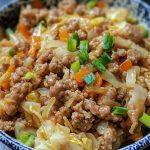ADVERTISEMENT
Food is an essential part of human life, providing nourishment, energy, and pleasure. However, not all foods are created equal. While most dishes are safe to consume, some carry hidden dangers that can range from mild discomfort to severe illness or even death.
Around the world, certain foods have earned a reputation for being particularly perilous due to their toxicity, preparation requirements, or potential for contamination. This article explores the 17 deadliest and most dangerous foods in the world, shedding light on why they pose such risks and how people manage to consume them safely.

The 17 Deadliest And Most Dangerous Foods In The World
b87ca62e2f4
1. Fugu (Pufferfish)
Perhaps the most infamous dangerous food, fugu is a Japanese delicacy made from pufferfish. The fish contains tetrodotoxin, a potent neurotoxin that is 1,200 times more toxic than cyanide. A single fish has enough toxin to kill 30 adults. Chefs must undergo rigorous training and certification to prepare fugu, as improper handling can result in paralysis or death. Despite the danger, fugu remains highly sought after for its unique texture and flavor.
2. Ackee Fruit
Native to West Africa but widely consumed in Jamaica, ackee fruit is a staple ingredient in the national dish, ackee and saltfish. However, if eaten before it ripens fully, the fruit produces hypoglycin A and B, toxins that can cause vomiting, seizures, and even death. To avoid poisoning, only the ripe, yellow arils should be consumed, and the seeds and red portions must be discarded.
3. Cassava (Yuca)
Cassava is a root vegetable commonly used in African, South American, and Caribbean cuisines. If not properly prepared, cassava can release cyanogenic glycosides, which convert into hydrogen cyanide during digestion. Chronic exposure to improperly processed cassava has been linked to neurological disorders like konzo. Soaking, boiling, or fermenting the root neutralizes these compounds, making it safe to eat.
4. Sannakji (Live Octopus)
A Korean specialty, sannakji consists of small octopuses served alive or freshly killed. The danger lies in the suction cups on the tentacles, which can adhere to the throat and cause choking. Diners are advised to chew thoroughly and swallow quickly to minimize the risk. Nevertheless, several deaths have occurred due to this risky delicacy.
Continued on the next page
ADVERTISEMENT

